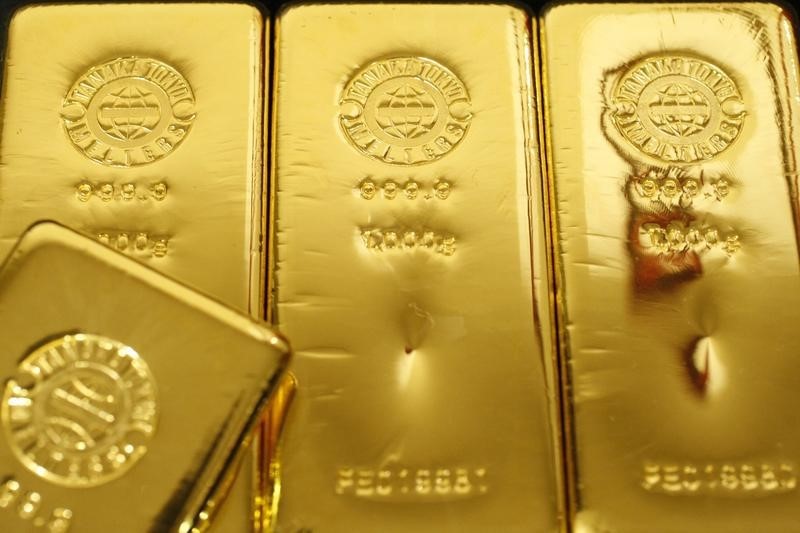Gold prices rebound after CPI-driven losses, record highs close

Gold prices rebounded in Asian trade on Thursday after hotter-than-expected U.S. inflation data dragged the yellow metal sharply off record highs, although safe haven demand and central bank buying kept prices close to recent peaks.
The yellow metal fell sharply in U.S. trade on Wednesday after consumer price index data showed U.S. inflation grew more than expected in March, remaining sticky.
The reading also saw the dollar surge to five-month highs, pressuring gold prices. Spot prices of the yellow metal slid 0.8% on Wednesday after touching record highs earlier this week.
But gold rebounded in Asian trade, as signs of persistent economic weakness in China drove up safe-haven demand for the yellow metal.
Spot gold rose 0.5% to $2,345.31 an ounce, while gold futures expiring in June rose 0.6% to $2,362.10 an ounce by 00:17 ET (04:17 GMT). Spot prices remained about $20 away from a record high of $2,365.34 hit earlier this week.
US rate fears present some headwinds to gold prices
But despite Thursday’s rebound, the outlook for gold was now somewhat clouded by the prospect of higher-for-longer U.S. interest rates.
The minutes of the Fed’s March meeting, released on Wednesday, also showed Fed officials growing more concerned over sticky inflation and calling for restrictive monetary policy.
Higher rates are expected to limit further gains in gold, given that they increase the opportunity cost of investing in bullion. Wednesday’s data saw traders slash their expectations for a rate cut in June, according to the CME Fedwatch tool.
But on the other hand, the yellow metal is seeing increased safe-haven demand amid fears of deteriorating economic conditions across the globe.
Major central banks in Asia and other emerging markets were seen increasing their gold holdings in recent months, which in part boosted prices. The People’s Bank of China bought gold for a 17th consecutive month, recent data showed, reflecting increased risk aversion.
China’s economy also continued to remain weak, as weak inflation data released on Thursday showed a sustained deflationary trend in the country.
Other precious metals also recovered from overnight losses. Platinum futures rose 0.4% to $980.85 an ounce, while silver futures steadied at $28.043 an ounce.
Copper regains some ground, but China fears in play
Among industrial metals, copper prices also rose from overnight losses, although gains were limited by weak economic data from top importer China.
Three-month copper futures on the London Metal Exchange rose 0.2% to $9,430 a ton, while one-month U.S. copper futures rose 0.3% to $4.2897 a pound.
Both contracts remained below recent 15-month peaks following weak Chinese inflation data. Factory-gate inflation shrank for an 18th consecutive month.
But they still retained a bulk of recent gains, on hopes that production cuts by Chinese refiners will tighten copper markets this year.
Interesting! It sounds like you’re following gold price movements closely. This news article summarizes the recent volatility in gold prices well:
- CPI dip: Higher than expected inflation data (CPI) caused the US dollar to strengthen, putting downward pressure on gold prices.
- Record highs: Despite the CPI-related dip, gold recently reached record highs, reflecting an overall positive outlook for the metal.
- Safe haven demand: Economic concerns in China are driving demand for gold as a safe-haven asset, helping prices rebound in Asian markets.
In short, gold prices are fluctuating due to economic factors, but the long-term trend seems positive. Are you interested in learning more about factors affecting gold prices, or perhaps looking for information on current prices?

